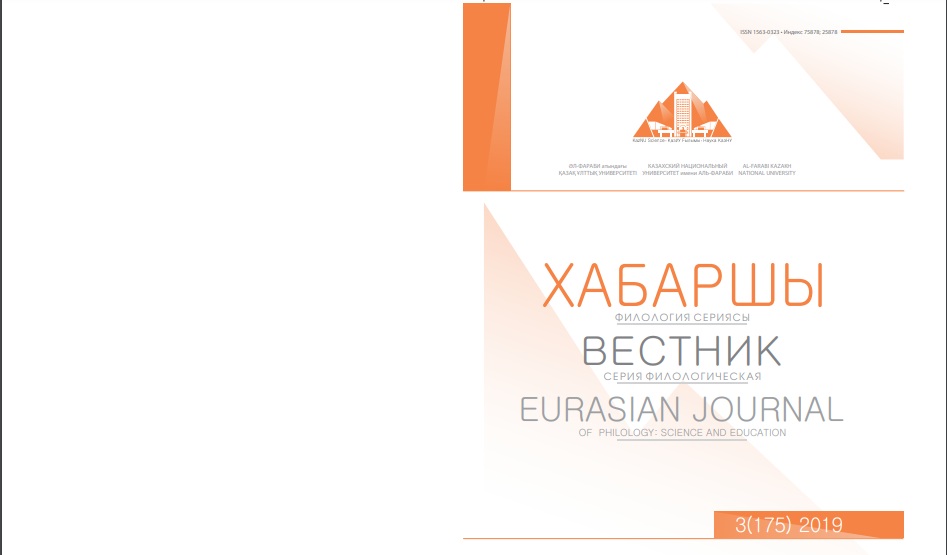Phono-morpho-semantic development of names associated with the human body
DOI:
https://doi.org/10.26577/EJPh-2019-4-ph19Abstract
The article is about the ancient Turkic languages.Ancient words are the earliest words that
came into being with him since the creation of mankind. From the time the first people came into existence, they referred to things that are common in everyday life. However, any of the words we use today
are not part of the original language. The reason is that language enriches with the help of loan words in
the context of historical development.
Language is a dynamic phenomenon.In the process of development, words are semantically interconnected, although they undergo some changes. Only the outward form of words tends to change. It
is the duty of the philologist to identify these changes. The laws of economy of linguistic means that
were discovered in recent years, the fusion phenomena, and the discovery of the sound of voices and
loud voices helped to determine the cause of change in ancient words.As a result of the discoveries, it
was possible to analyze any ancient word in Turkic languages. In the process of research exact examples
have been taken from Kipchak group of Turkic languages i.e. Kazakh and Karakalpak languages, from the
Karluk group of Turkic languages Uzbek, Uighur as well as Oguz group of Turkic languages i.e. Turkmen,
Azerbaijan languages.This article refers to the names of body parts.
The article gives a lot of information to young scientists who are studying language history. It deals
with the theoretical problems of comparative Turkology and the ways how to apply them in practice.






